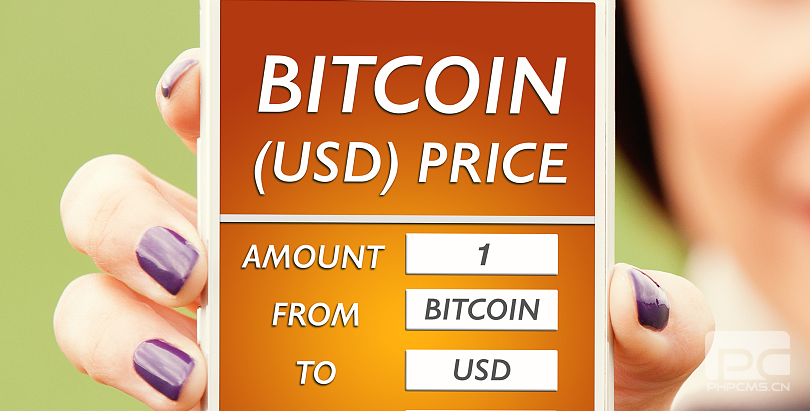During 2013 to 2017, Peter To claimed to have earned over a million dollars through day trading during the Bitcoin bull market.
Despite a recent significant increase in global cryptocurrency prices in the past few weeks, more than doubling since last year's crash, which had caused the FTX exchange to crash, the 34-year-old professional stock trader from New York says it's no longer enough for him.

To states, "Bitcoin's volatility and momentum aren't what they used to be. It's no longer as interesting for traders like me who seek inefficiencies in the market. The allure has faded."
Meanwhile, FTX co-founder Sam Bankman-Fried is waiting to find out how long he'll be sentenced for fraud, and many in the industry see the end of this dark chapter as a sign that the immature, chaotic phase of the industry is coming to an end, making way for a more mature era. However, this might also mean the market will no longer provide the magnificent growth and once-in-a-lifetime trading opportunities it did in the past.
Bitcoin surged to over $35,000 last week, although it is still far below its all-time high of nearly $69,000 in 2021. The market is brimming with optimism as the first-ever Bitcoin exchange-traded fund (ETF) for holders of Bitcoin is expected to be approved, with BlackRock Inc. having applied for an ETF in June. More good news came in August when a judge overturned the decision to prevent Grayscale Investments LLC's Bitcoin Trust from converting into an ETF.
Following the collapse of the FTX exchange last year, retail investors withdrew, and Bitcoin prices fell below $16,000. According to JPMorgan data, traders saw a drop of about 40% in returns in 2022. Not only in the crypto market, but the share of retail investors in the U.S. stock market also fell by 40% at the end of last year compared to the beginning of 2021, and stocks, once driven by retail investors, performed far worse than the market.
Despite an overall market drop of about 5% since the end of July, the situation seems somewhat optimistic. On Bitstamp exchange, the share of U.S. retail cryptocurrency trading volume has risen from 33% in the first half of the year to 35% in the second half, and globally from 8% to 9%.
Bobby Zagotta, CEO of Bitstamp USA, stated, "In bear markets, the retail market is usually fairly quiet. I think we've improved in that regard."
However, many cryptocurrency day traders have already left. Craig Murray estimates he earned nearly $200,000 in the market, and he said he narrowly avoided losing it all when he heard that FTX was about to crash from friends in the industry. By that time, the 23-year-old New York resident, who recently dropped out of Vanderbilt University, had made up his mind.
"That changed my mind entirely," Murray said. "I decided it wasn't worth it. Why would I keep my money in a place where everything could disappear one day?"
Another sign that retail investors are no longer as interested in the crypto market as before is the trading volume on weekdays compared to weekends. Some believe the typical crowd trading on weekends are day traders.
"Now, on average, trading volume on weekdays is 50% higher than on weekends, compared to almost 1:1 in the past," said Fredrick Collins, CEO and founder of cryptocurrency data platform Velo Data.
Tim van den Berg traded various digital assets from Bitcoin to Dogecoin from 2016 to 2019 during his time at a university in the Netherlands, using the Dutch trading platform Plus500. He lost about $12,000 during that time.
"I kept losing money," he said. "I had to save money, find a better job, and worry about my studies."
The 24-year-old Van den Berg says he now understands the market better and makes money from futures trading, but digital assets no longer appeal to him.
"Cryptocurrencies are so manipulated now," he said. "It was initially something to defeat the banking system, but now it's just transferring a lot of money for the rich. When the U.S. market closes, the crypto market is basically no longer volatile."
Despite a recent significant increase in global cryptocurrency prices in the past few weeks, more than doubling since last year's crash, which had caused the FTX exchange to crash, the 34-year-old professional stock trader from New York says it's no longer enough for him.

To states, "Bitcoin's volatility and momentum aren't what they used to be. It's no longer as interesting for traders like me who seek inefficiencies in the market. The allure has faded."
Meanwhile, FTX co-founder Sam Bankman-Fried is waiting to find out how long he'll be sentenced for fraud, and many in the industry see the end of this dark chapter as a sign that the immature, chaotic phase of the industry is coming to an end, making way for a more mature era. However, this might also mean the market will no longer provide the magnificent growth and once-in-a-lifetime trading opportunities it did in the past.
Bitcoin surged to over $35,000 last week, although it is still far below its all-time high of nearly $69,000 in 2021. The market is brimming with optimism as the first-ever Bitcoin exchange-traded fund (ETF) for holders of Bitcoin is expected to be approved, with BlackRock Inc. having applied for an ETF in June. More good news came in August when a judge overturned the decision to prevent Grayscale Investments LLC's Bitcoin Trust from converting into an ETF.
Following the collapse of the FTX exchange last year, retail investors withdrew, and Bitcoin prices fell below $16,000. According to JPMorgan data, traders saw a drop of about 40% in returns in 2022. Not only in the crypto market, but the share of retail investors in the U.S. stock market also fell by 40% at the end of last year compared to the beginning of 2021, and stocks, once driven by retail investors, performed far worse than the market.
Despite an overall market drop of about 5% since the end of July, the situation seems somewhat optimistic. On Bitstamp exchange, the share of U.S. retail cryptocurrency trading volume has risen from 33% in the first half of the year to 35% in the second half, and globally from 8% to 9%.
Bobby Zagotta, CEO of Bitstamp USA, stated, "In bear markets, the retail market is usually fairly quiet. I think we've improved in that regard."
However, many cryptocurrency day traders have already left. Craig Murray estimates he earned nearly $200,000 in the market, and he said he narrowly avoided losing it all when he heard that FTX was about to crash from friends in the industry. By that time, the 23-year-old New York resident, who recently dropped out of Vanderbilt University, had made up his mind.
"That changed my mind entirely," Murray said. "I decided it wasn't worth it. Why would I keep my money in a place where everything could disappear one day?"
Another sign that retail investors are no longer as interested in the crypto market as before is the trading volume on weekdays compared to weekends. Some believe the typical crowd trading on weekends are day traders.
"Now, on average, trading volume on weekdays is 50% higher than on weekends, compared to almost 1:1 in the past," said Fredrick Collins, CEO and founder of cryptocurrency data platform Velo Data.
Tim van den Berg traded various digital assets from Bitcoin to Dogecoin from 2016 to 2019 during his time at a university in the Netherlands, using the Dutch trading platform Plus500. He lost about $12,000 during that time.
"I kept losing money," he said. "I had to save money, find a better job, and worry about my studies."
The 24-year-old Van den Berg says he now understands the market better and makes money from futures trading, but digital assets no longer appeal to him.
"Cryptocurrencies are so manipulated now," he said. "It was initially something to defeat the banking system, but now it's just transferring a lot of money for the rich. When the U.S. market closes, the crypto market is basically no longer volatile."




Copyright © 2023.Yooke studio All rights reserved.
PKWEEKLY NEWS












